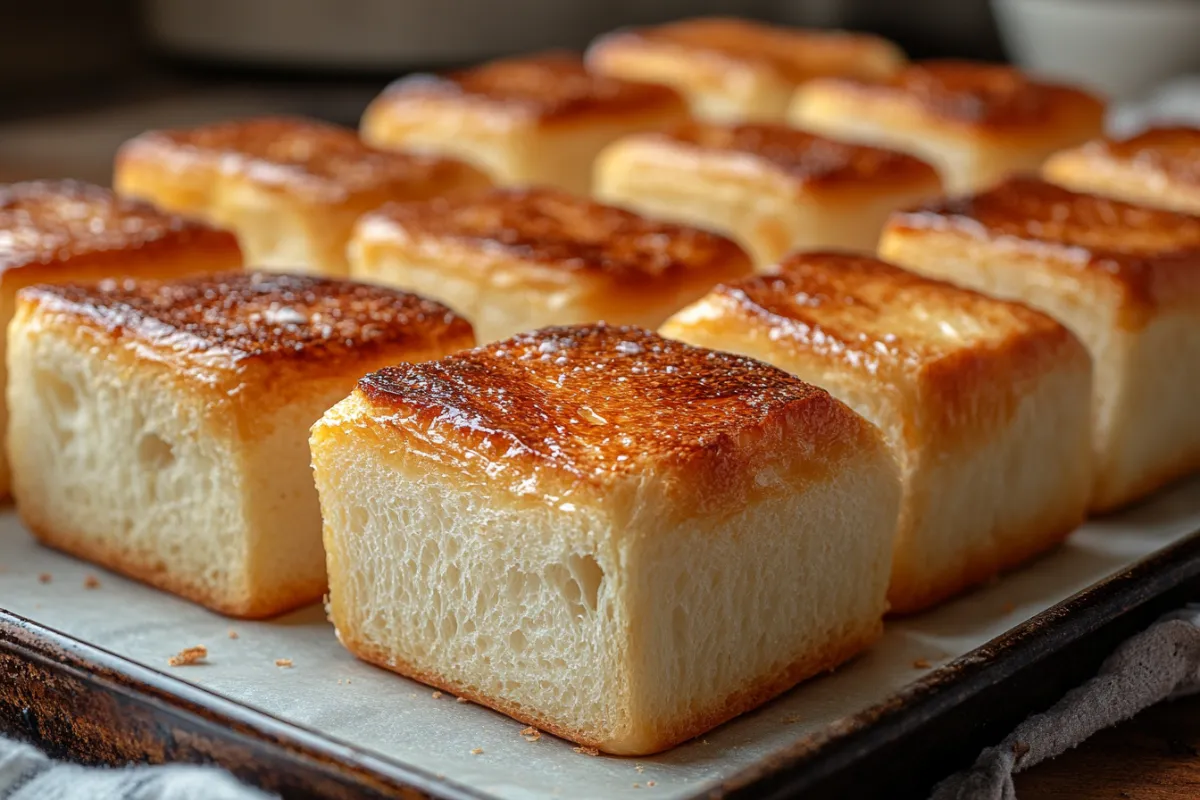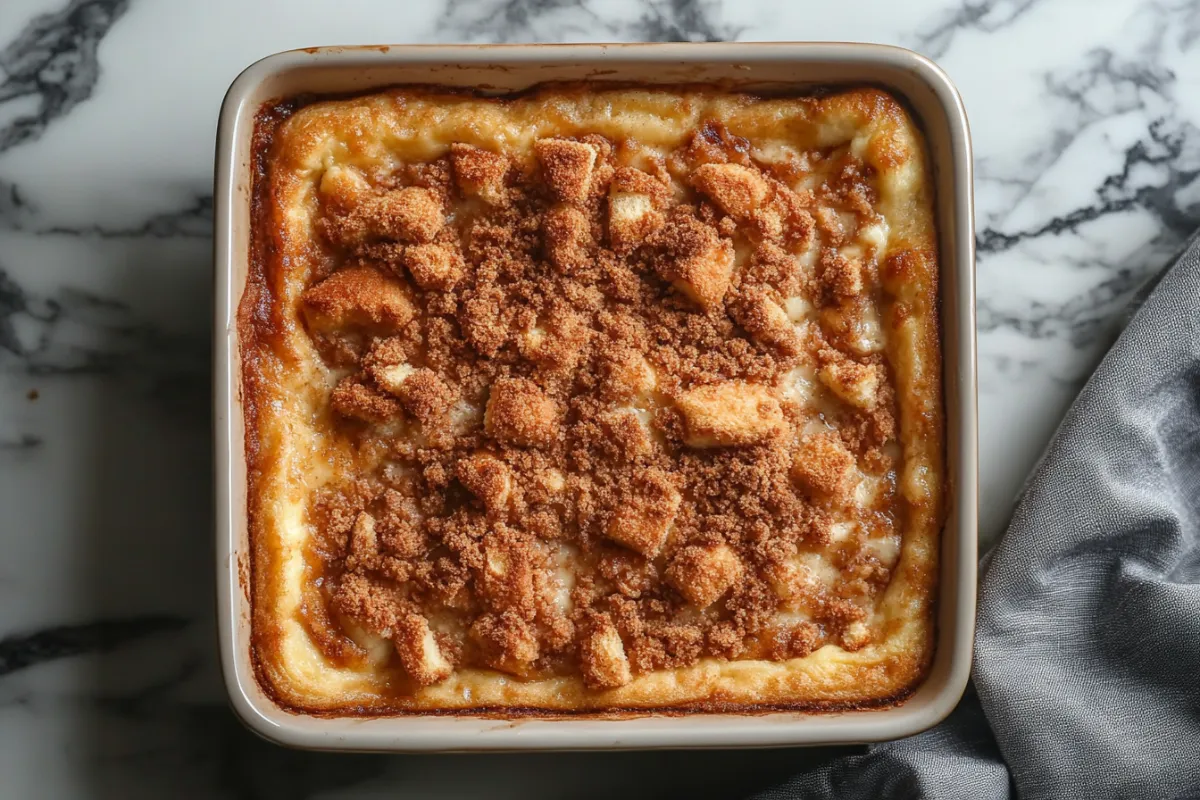Discover if brioche bread is the ideal choice for your french toast casserole and explore tips for achieving the best results.
Using brioche bread for french toast casserole is a fantastic idea, thanks to its rich flavor and texture. However, there are several factors to consider when deciding on your bread. This article will explore how brioche impacts the casserole, along with the best techniques for a delicious outcome.
Why Choose Brioche Bread For French Toast Casserole?
Brioche is known for its soft, buttery texture, which makes it an excellent candidate for french toast casserole. Its high egg and butter content means it absorbs custard exceptionally well. Therefore, your casserole will be incredibly moist and flavorful. In addition, the subtle sweetness of brioche enhances the overall taste of the dish, giving it a gourmet touch. Discover why brioche is a great choice for breakfast casseroles. However, it is also important to consider if the increased moisture level will work with the recipe you are using, especially in terms of sogginess.
The Benefits of Brioche in french toast bake
-
Rich Flavor: The high butter content gives brioche a luxurious taste.
-
Soft Texture: It becomes incredibly tender when soaked in custard.
-
Excellent Absorption: Brioche readily soaks up the custard mixture. Therefore, you’ll have a rich and flavorful casserole.
-
Subtle Sweetness: This adds a delicious depth of flavor to the dish.
Potential Challenges of Brioche in french toast bake
-
Moisture Content: Brioche is already moist. Thus, be careful not to oversaturate it with custard.
-
Cost: Brioche can be more expensive than other types of bread.
-
Availability: Depending on your location, brioche may not always be readily available.
Preparing Brioche for Your French Toast Casserole
Proper preparation is key to achieving the perfect french toast casserole with brioche bread. Cutting the brioche into the right size and drying it slightly ensures it doesn’t become too soggy. These steps are essential for a balanced texture and an enjoyable experience.
Cutting the Brioche in french toast bake
First, cut the brioche into 1-inch cubes. However, you can adjust the size depending on your preference. Smaller cubes will absorb the custard more quickly. Larger cubes offer a slightly different texture. Additionally, ensure all cubes are roughly the same size for even baking. Using a serrated knife will also help in slicing the soft brioche without crushing it.
Drying the Brioche in french toast bake
After cutting, spread the brioche cubes in a single layer on a baking sheet. Bake at 200°F (93°C) for 10-15 minutes. This step helps to dry the bread. Consequently, the brioche will better absorb the custard without getting soggy. Furthermore, you can also let the bread sit out at room temperature for a few hours to dry if you don’t want to use the oven. This alternative method still helps achieve the required result of partially dried bread. If you find the oven drying to be a bit harsh, try reducing the temperature slightly and increasing the time to prevent any unwanted crispness.
The Custard Mix
The custard is the heart of any french toast casserole, but especially with brioche bread. To create the perfect custard, you’ll want to aim for the right balance of sweetness, spices, and richness that best complements the brioche. It also important to consider the different options for dairy and flavourings to accommodate any allergies, tastes and dietary requirements of your intended audience.
Custard Ratio for Brioche
Use a ratio of about 1 cup of liquid (milk or cream) for every 4 cups of brioche cubes. Additionally, add 2-3 eggs per cup of liquid. This ensures that the brioche is well-coated without becoming overly saturated. For richness, use half-and-half or whole milk and consider adding a touch of heavy cream. Furthermore, if you are aiming for a lighter casserole, you can use a reduced-fat milk or even unsweetened almond milk, keeping in mind that the final product might be less rich.
Flavor Enhancements
Do not forget the flavour in your custard. Incorporating vanilla extract and a pinch of cinnamon is therefore ideal for a classic flavor. Moreover, consider adding other spices like nutmeg or cardamom for extra depth. Brown sugar or maple syrup can be incorporated for sweetness, depending on your preferences. If you want to amplify the spices even more, a few drops of a complimentary essential oil (food grade) like orange or lemon can add a delicious subtle flavour. A hint of salt, surprisingly, can bring out all of the other flavors and provide a better-balanced dish. Additionally, remember that the quality of your ingredients does matter. Using good quality vanilla extract or fresh ground spices, will significantly improve your dish.
Assembling Your French Toast Casserole with Brioche
When assembling your french toast casserole with brioche bread, it’s essential to ensure even distribution and proper layering. This will help achieve a uniformly baked casserole with the best flavor and texture. The assembling process is also a great time to introduce extra elements to your dish, like fillings and toppings, so careful planning at this stage is important.
Layering Process
First, grease your baking dish with butter or a cooking spray. Then, arrange half the dried brioche cubes in an even layer. Pour half of the custard mixture over the brioche. Next, add any desired fillings like fruits, nuts, or chocolate chips. Layer the remaining brioche cubes on top. Finally, pour the rest of the custard over the final layer. If you are using a larger baking dish, you may require more than two layers of brioche to achieve a layered and evenly distributed dish.
Soaking Time
Allow the casserole to sit for at least 30 minutes, or preferably overnight. This soaking period ensures that the brioche fully absorbs the custard. Therefore, resulting in a moist and flavorful final product. If baking immediately, allow at least 30 minutes. A longer soaking time helps meld the flavors together. If you are planning to bake the casserole the same day, ensure that you give it at least 30 minutes to soak for a better result.
Baking the Casserole
Preheat your oven to 350°F (175°C). Bake the casserole for 40-50 minutes, or until the top is golden brown and the center is set. Let the casserole rest for 10-15 minutes before serving. This rest allows it to set up more completely. Furthermore, using a toothpick to check the doneness is key. Insert the toothpick into the center and if it comes out clean or with a few moist crumbs, your casserole is ready.
Recipe Variations Using Brioche Bread For French Toast Casserole
Using brioche bread for your french toast casserole opens up numerous possibilities for variations. You can customize it with different flavors, fillings, and toppings to suit your preferences. Therefore, explore various options to create a unique and memorable breakfast or brunch dish. The versatility of brioche lends itself well to both sweet and savory adaptations.
Sweet Variations
-
Berry Bliss: Add fresh or frozen berries like blueberries, raspberries, or strawberries. Moreover, you can use a mixed berry combination for a medley of flavours.
-
Caramel Apple: Mix in diced apples and caramel sauce. Additionally, you can use a homemade or store-bought caramel sauce for this variation.
-
Chocolate Chip: Incorporate dark, milk, or white chocolate chips. You can also add a mixture of all three for a more complex chocolate flavour.
-
Pecan Praline: Use chopped pecans and a brown sugar-cinnamon mixture. Furthermore, adding a touch of maple syrup will enhance this even more.
-
Lemon Poppy Seed: Add lemon zest and poppy seeds to the custard for a refreshing citrusy flavor. This variation can be enhanced with a lemon glaze.
-
Coconut Macadamia: Add shredded coconut and macadamia nuts to the casserole for a tropical twist.
Savory Variations
-
Ham and Swiss: Layer cooked ham and Swiss cheese between the brioche cubes. For a smokier flavour try using smoked ham or swiss cheese.
-
Spinach and Feta: Mix in sautéed spinach and crumbled feta cheese. Sautéing a little garlic with the spinach will enhance the overall flavor.
-
Mushroom and Gruyere: Use sautéed mushrooms and Gruyere cheese for a savory option. You can also use a variety of mushroom types to create even more depth of flavor.
-
Sausage and Cheddar: Include crumbled breakfast sausage and shredded cheddar cheese. You can use different types of sausage like chicken or chorizo to provide a varied taste.
-
Tomato and Basil: Add sun-dried tomatoes, fresh basil, and mozzarella cheese for a Mediterranean-inspired option.
-
Bacon and Gruyere with Caramelized Onions: Combine crispy bacon, Gruyere cheese, and sweet caramelized onions for a sophisticated savory variation.
Topping Options
-
Powdered Sugar: A classic and simple topping. Additionally, a dusting of cocoa powder can be used along with the powdered sugar.
-
Maple Syrup: A traditional choice for french toast. Furthermore, experiment with different types of maple syrup for various flavour profiles.
-
Whipped Cream: Adds a light and airy texture. You can also enhance the flavour by using vanilla or flavoured extracts in the whipped cream.
-
Fruit Compote: A flavorful and elegant option. A fresh or homemade compote is also recommended.
-
Streusel Topping: Provides a crunchy contrast. A streusel can consist of butter, flour, sugar and any added spice or nuts.
-
Caramel Sauce: A drizzle of caramel sauce can enhance the sweetness of the casserole.
-
Chocolate Sauce: Chocolate sauce is ideal for a more decadent dessert version. You can use dark, milk or white chocolate sauce.
Detailed Tips and Tricks For The Perfect Brioche French Toast Casserole
Making the perfect french toast casserole with brioche bread involves more than just following a recipe. The key is understanding the subtle nuances that can elevate your dish. These additional tips and tricks will help ensure your casserole turns out amazing every single time.
Choosing the Right Brioche
When selecting brioche for your casserole, look for a loaf that is slightly firm. If the brioche is too soft, it may become overly soggy. A good quality brioche will have a rich, buttery aroma and a golden-brown crust. You can use a plain brioche or even a flavored option, such as cinnamon or chocolate swirl.
Understanding Bread Density
The density of your brioche will affect how it absorbs the custard. A denser brioche will take longer to soak but is less likely to fall apart, whereas a lighter brioche may become soggy quicker, but may yield a more moist end result. Adjust your soaking time accordingly.
Custard Consistency
The consistency of your custard is very important for the final texture of the casserole. If the custard is too thick, it won’t soak into the brioche evenly. If the custard is too thin, the casserole may be too wet. A good custard should have a pourable, creamy texture, similar to that of heavy cream.
Adding Spices
Don’t be afraid to experiment with different spices in your custard. A combination of cinnamon, nutmeg, and cloves is a great place to start. For a richer, warmer flavor try adding a pinch of allspice or ginger. Remember to adjust the amounts to suit your taste preferences.
Incorporating Fillings
When adding fillings to your casserole, be sure to distribute them evenly between the brioche layers. Adding too many fillings can weigh down the casserole and prevent it from cooking evenly. If using frozen fruit, do not thaw first before adding them to the casserole, to avoid extra moisture.
Pre-Soaking The Casserole
Soaking the brioche in the custard ahead of time allows the flavors to meld together. For a better flavor, consider soaking the casserole overnight in the refrigerator. This also helps with the absorption and prevents a dry casserole. If you choose to soak it overnight, reduce the time in the oven slightly to prevent over-browning the top.
Baking Technique
Preheating your oven is vital for baking your casserole correctly. Baking it at a slightly lower temperature can also prevent the edges from burning. If you notice that the top is browning too quickly, cover the casserole loosely with foil for the remainder of the cooking time. Remember to check with a toothpick in the center to make sure the casserole is properly cooked.
Resting Time
After baking, let the casserole rest for 10-15 minutes. This resting time will allow the casserole to firm up and make it easier to serve. If you cut into it while still too hot, it may fall apart. The resting time will also help ensure a much better flavour.
Troubleshooting Common Issues
Even with the best intentions, sometimes things can go wrong when making french toast casserole. However, knowing common issues and their solutions can save you from a disappointing outcome.
Soggy Casserole
-
Problem: The casserole is too wet and mushy.
-
Solution: Ensure the brioche is partially dried before adding the custard. Reduce the amount of liquid in the custard. Additionally, do not oversoak the bread. Finally, bake the casserole for a longer time. Make sure you do not skip the drying process as the brioche tends to be very moist to begin with.
Dry Casserole
-
Problem: The casserole is dry and lacking moisture.
-
Solution: Use a higher ratio of liquid to bread in the custard. Check that you are not over-drying the bread before adding custard. Moreover, ensure you’re not over-baking the casserole. Also, check the temperature of the oven to ensure it is not too high.
Uneven Cooking
-
Problem: The edges are overcooked while the center is still soft.
-
Solution: Cover the casserole with foil for the first half of baking. Next, remove the foil for the second half. Furthermore, rotate the baking dish halfway through cooking for even browning. Ensure the ingredients are layered evenly in your dish.
Flavor Problems
-
Problem: The casserole lacks flavor.
-
Solution: Enhance the custard by adding a variety of flavors. Ensure your spices are fresh. Experiment with additions like vanilla, cinnamon, and nutmeg. You can also use browned butter for extra flavour. Do not be afraid to try different extracts in your custard for varied tastes.
Burnt Top
-
Problem: The top of the casserole burns before the middle is cooked.
-
Solution: Lower your oven temperature, or cover the dish with foil for most of the baking time to avoid this problem. Once the middle is almost set, you can remove the foil to allow the top to brown properly.
Is Brioche Bread the Best Choice for French Toast Casserole?
Brioche bread is a wonderful option for french toast casserole. It offers a rich taste and pleasing texture. Therefore, it’s a great choice for a special breakfast. However, it might not be the most practical option for a daily bake due to the higher cost. The use of brioche bread for french toast casserole certainly adds an element of luxury to the dish. In addition, the versatility it offers allows for a multitude of exciting flavor combinations that would appeal to a large audience. While there are other suitable breads to use for this dish, brioche bread undoubtedly is a fantastic option if you are wanting to create an exceptional breakfast or brunch. The quality and taste of brioche makes it a worthwhile selection. Explore alternative bread options for French toast casseroles, including the unique texture and taste of sourdough.
Conclusion
Ultimately, can you use brioche bread for french toast casserole? The answer is a resounding yes! This rich, buttery bread elevates the dish, offering a delightful texture and flavor that other breads often lack. Understanding how to prepare brioche for this recipe will ensure a perfectly moist and delicious casserole every time. By following these guidelines, you can create a truly exceptional french toast casserole.
Frequently Asked Questions
Can you use brioche bread for french toast casserole?
Yes, brioche bread is an excellent choice for french toast casserole. Its rich, buttery texture and flavor make for a delicious and luxurious result.
Is it better to use day-old brioche for french toast casserole?
Yes, slightly dried brioche is ideal for french toast casserole. This helps the bread absorb the custard without becoming overly soggy. Day-old or lightly dried brioche is recommended.
What other types of bread can be used instead of brioche?
Alternatives to brioche include challah, Texas toast, or even croissants. These can also create a satisfying french toast casserole but with slightly different textures and flavors.
Do I need to soak the brioche before baking?
Yes, soaking the brioche in the custard is essential for the best flavor and texture. Allow at least 30 minutes, or preferably overnight, for the bread to fully absorb the custard.




